Early Years
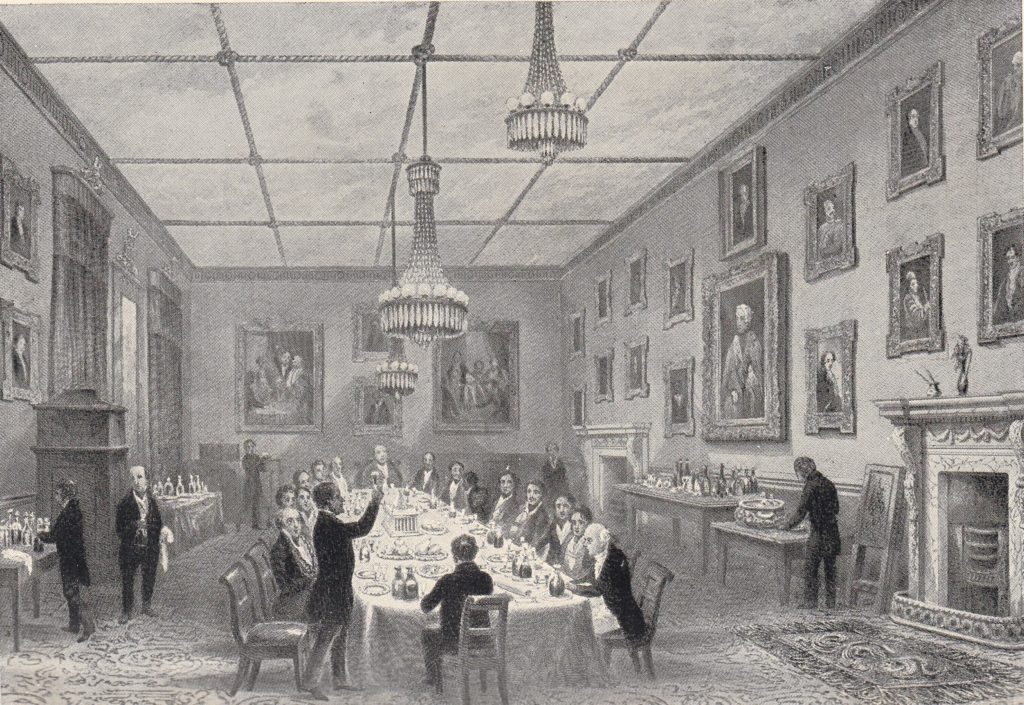 The meeting room at the Thatched Tavern, St James Street, where the Entomological Society of London held its first meeting
The meeting room at the Thatched Tavern, St James Street, where the Entomological Society of London held its first meeting
The Royal Entomological Society library has existed since the Society’s founding in 1833. One of the key aims of the Society was to form a library, and founding President, John George Children (1777-1852) was a former librarian at the British Museum. At the first general meeting, held at The Thatched Tavern, St James’s Street in May 1833, George Robert Waterhouse (1810–1888) was appointed as ‘Curator of books, memoirs, and insects’. Shortly after this, the Society rented two rooms at 17 Old Bond Street, London. Donations of books, journals and insect specimens were collected at each meeting and published in the ‘Journal of Proceedings’. In 1834 a subscription was collected to pay for books and cabinets, and by 1836, 194 books and journals on Entomology and Natural History had been collected, and the first catalogue published in ‘Transactions of the Royal Entomological Society’.
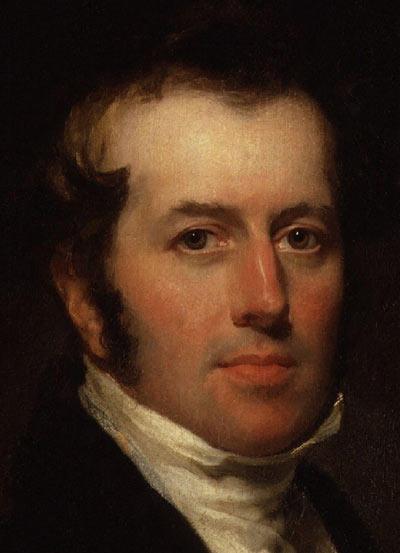
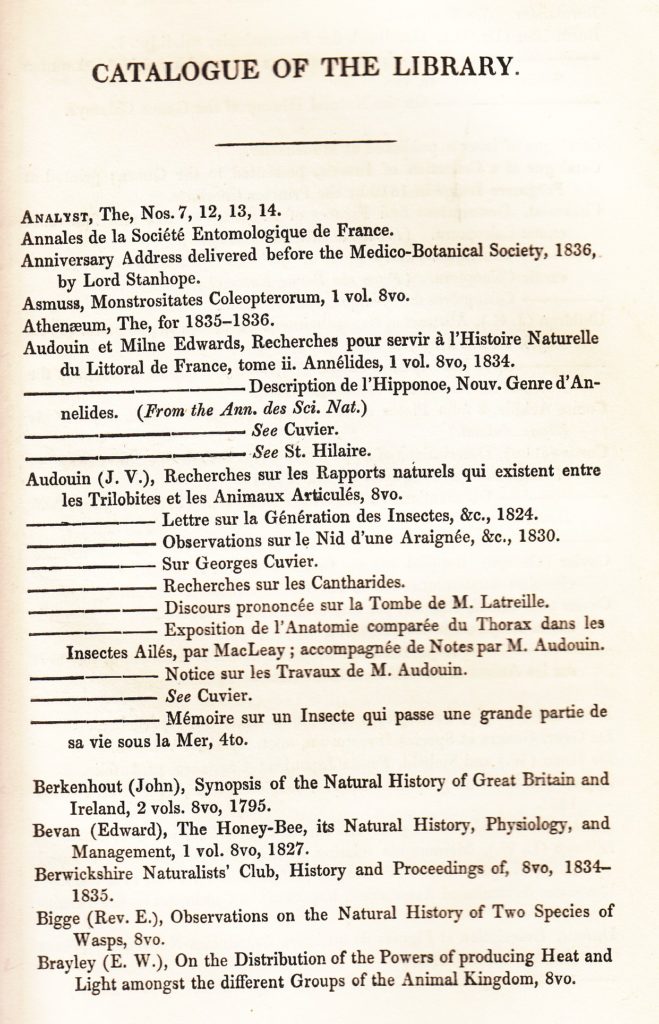
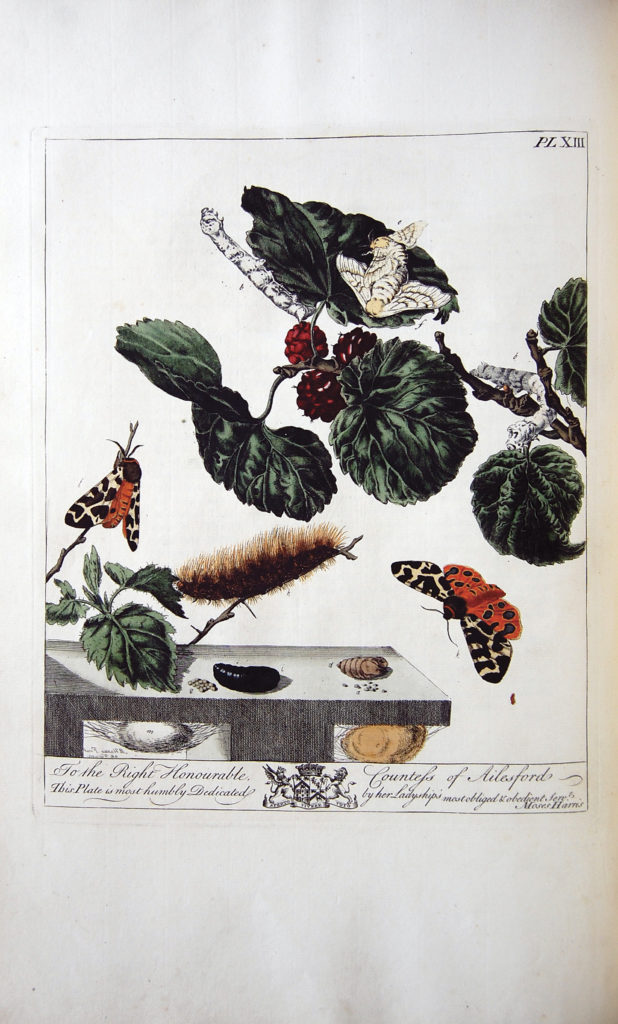 Left: RES Founding President John George Children; Middle: The first Library Catalogue was published in 1836; Right: A plate from ‘The Aurelian’ by Moses Harris, (1776) donated to the Library by Mrs Stainton in 1898
Left: RES Founding President John George Children; Middle: The first Library Catalogue was published in 1836; Right: A plate from ‘The Aurelian’ by Moses Harris, (1776) donated to the Library by Mrs Stainton in 1898
The library grew significantly over the following years. As well as money being made available for the purchase of new material, many books were donated by Fellows. Early donations include that of Rev. F. W. Hope who donated his collection of books on beekeeping in 1839. Mrs Stainton, widow of Henry Tibbats Stainton, bequeathed a significant number of volumes from her husband’s substantial library. This included many items of significant scientific and artistic importance such as Moses Harris’s ‘The Aurelian, or a natural history of English Insects’ (1776) which contains a number of highly detailed hand-coloured copperplate etchings.
In 1852 the Society moved to 12 Bedford Row, and following the sale of the Society’s insect collection, the position of Curator became that of Librarian, in 1863. Despite complaints about his neglect of the insect collections, during his time as Curator, Edward Westley Janson became the first Honorary Librarian. He proved no more competent in this new role, with Secretary Joseph William Dunning, describing the state of collections as ‘a disgrace to a learned Society’ and offering assistance to create and maintain a catalogue and purchase a new bookcase.
The librarian’s time was spent in mere chat, in chaff and badinage, in buying selling and bartering beetles, that the library was without a catalogue, and completely without arrangement, and, in short, the whole matter was a disgrace to a learned Society.
J. W. Dunning on Honorary Librarian E.W. Janson
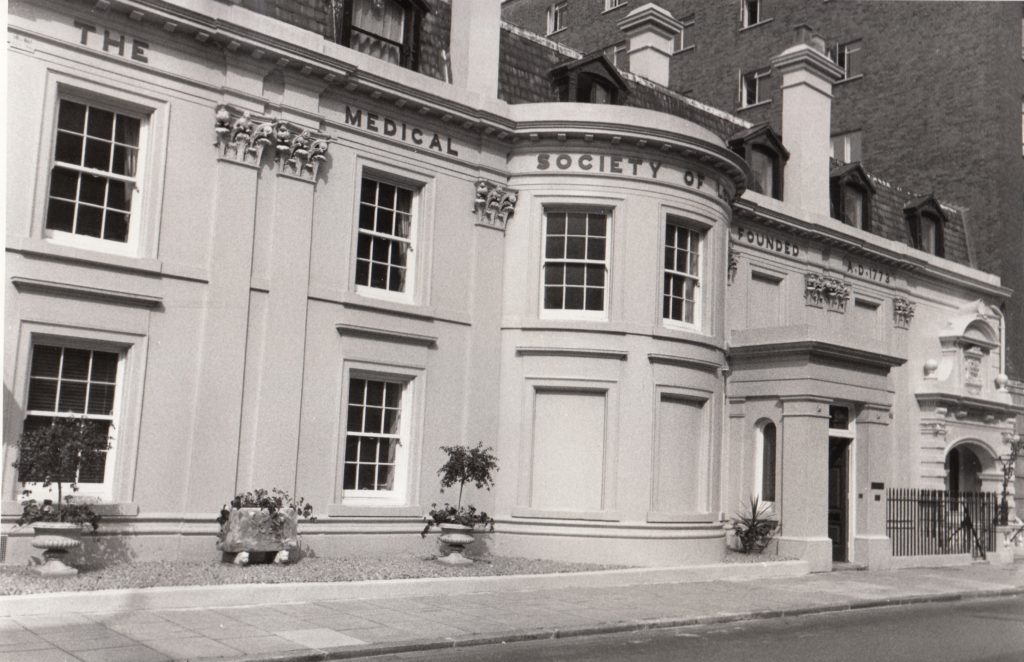 11 Chandos Street, where RES was based from 1875-1921
11 Chandos Street, where RES was based from 1875-1921
In 1875 the Society became tenants of the Medical Society of London at 11 Chandos Street, where the growing Library could be more easily accommodated. An employee of the Medical Society was hired as a paid Librarian, and the Library was open every weekday for the first time. After one year in the role Rev. T.A. Marshall succeeded him as Honorary – meaning unpaid – Librarian . He held the role until 1877 when he resigned to work abroad. He was replaced in 1878 by Ferdinand Grut, a former Vice-President of the Society, who remained Librarian until his death in in 1891. He was responsible for compiling a large manuscript catalogue of the collections. George Charles Champion took over the position and served for over 30 years.
20th Century
A room about twenty feet square and perhaps nine feet high, the walls covered with bookshelves from floor to ceiling, and every available foot of floor space similarly occupied. The books themselves were crowded into the shelves, and in many cases mere two, and in some cases three tiers deep.
W. Bateson on the Library at 11 Chandos Street in 1920
In 1921, with the library again extremely overcrowded, the Society moved to 41 Queen’s Gate, conveniently close to the Natural History Museum, where it remained for nearly 90 years. The final honorary librarian was H. J. Turner, who served from 1921 until 1929, when a professional Librarian was appointed. A card catalogue was introduced in 1923 and by the time of the Society’s centenary in 1933 it filled 28 drawers, and listed over 40,000 entries.
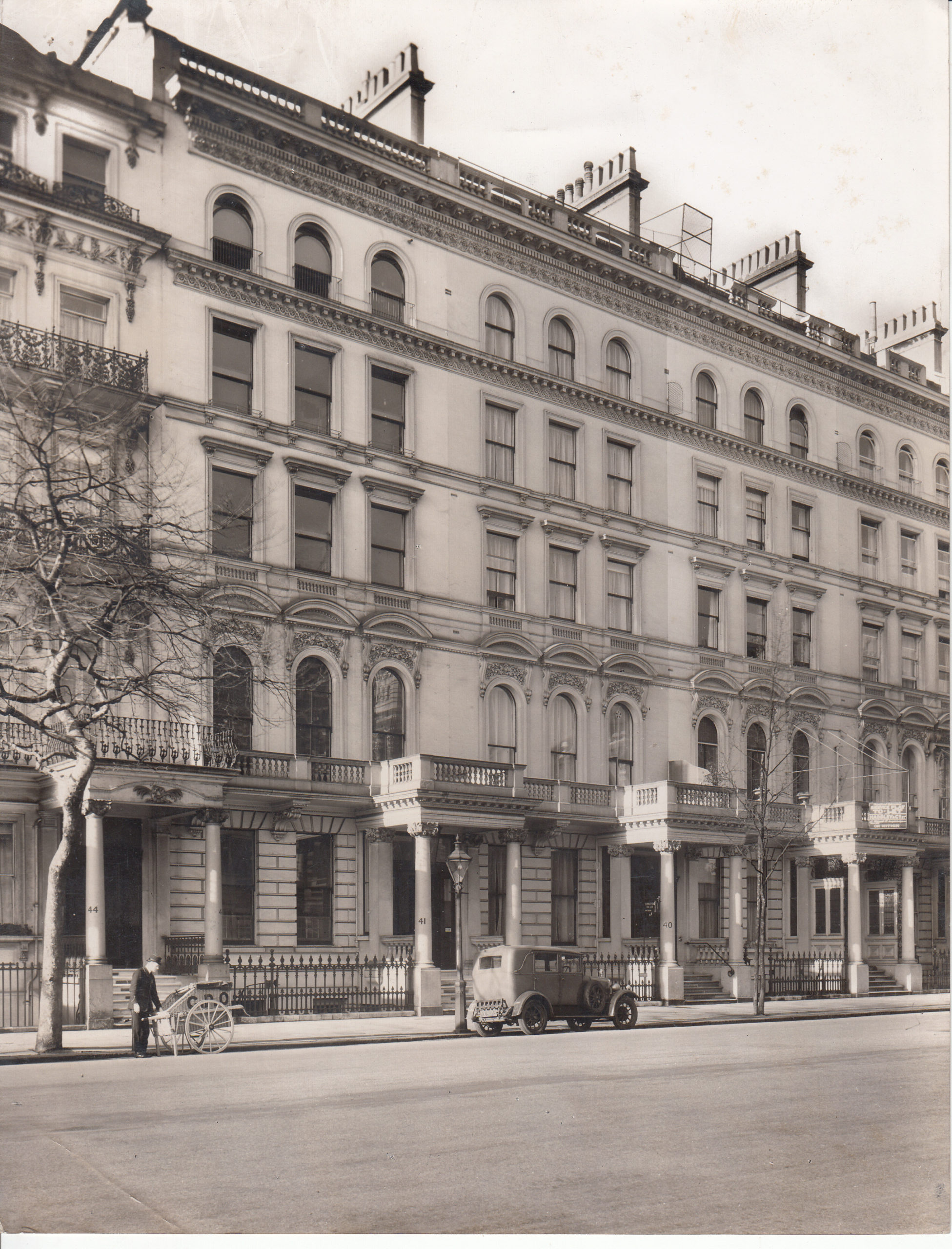 41 Queens Gate in 1932
41 Queens Gate in 1932
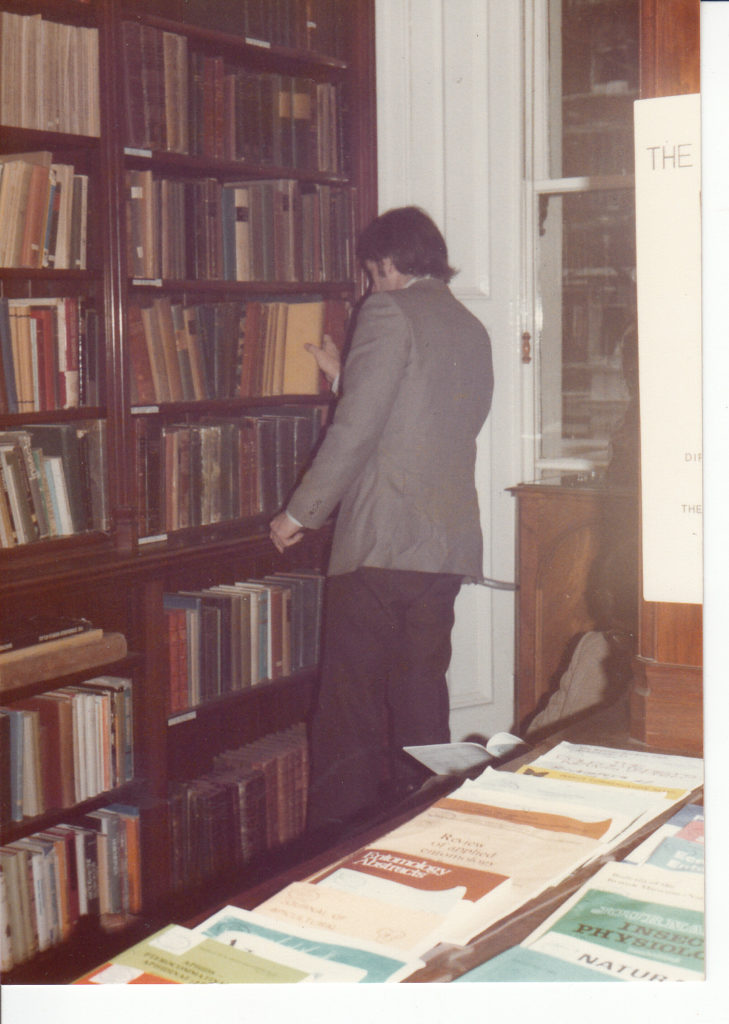 Browsing the shelves in the Library at Queens Gate 1985
Browsing the shelves in the Library at Queens Gate 1985
Photo by Dr J. Vincent
With the outbreak of war in 1939 the rarer volumes, along with Shakespeare manuscripts and the Magna Carta, were sent to Aberystwyth under the care of The National Library of Wales, as well as other sites around the country. After 1945, the volumes were reassembled in London.
In 1981, a review of the Library noted that most members had access to a library via their employers for their day to day needs, meaning that RES Library had a focus on rarer and more specialised items, that were hard to find elsewhere, and often served as a source of information for their non-professional entomological interests. The most popular topics were taxonomy and British Entomology. The Library also acted as a Special Source Library to the British Library.
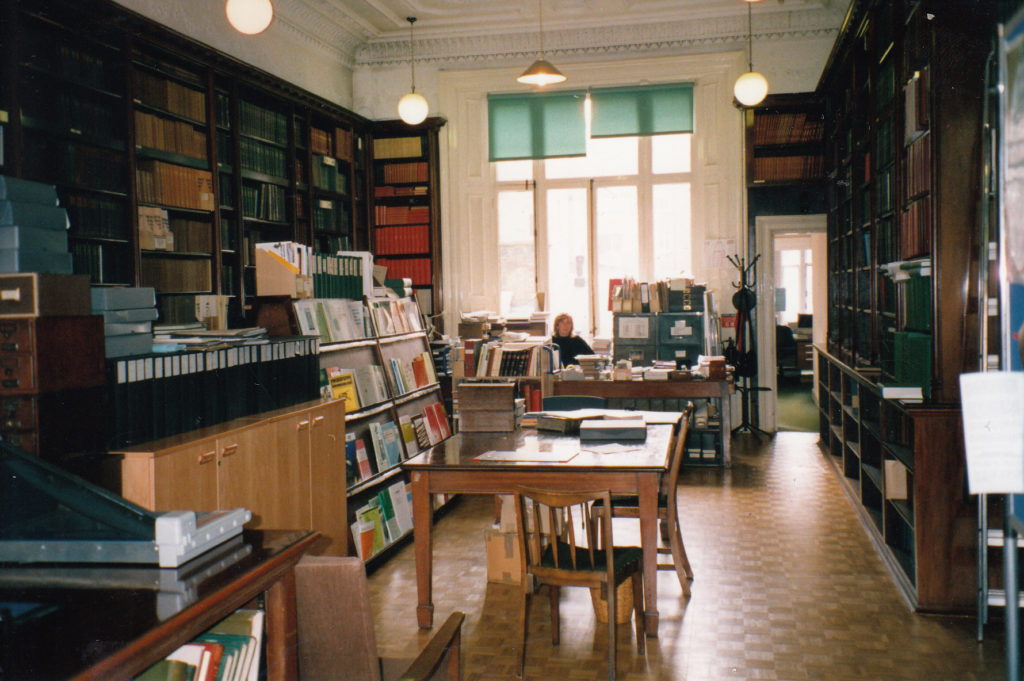 The Main Library in 1985
The Main Library in 1985
Photo by Dr J. Vincent
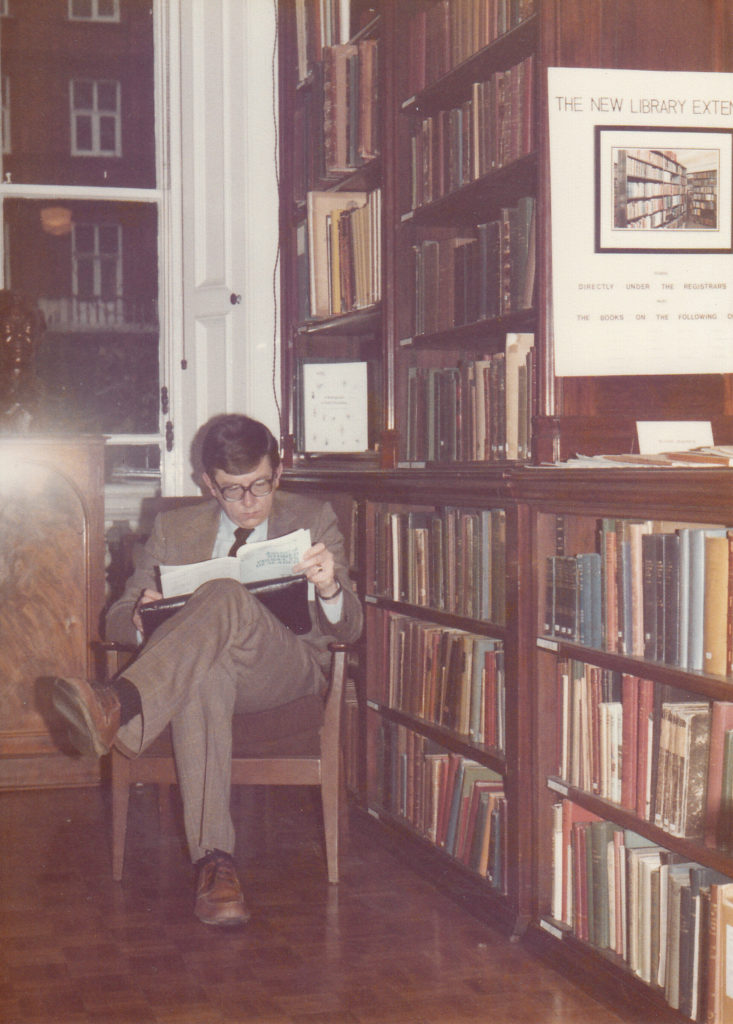 The Main Library in 1985
The Main Library in 1985
Photo by Dr J. Vincent
21st Century
In 2007 the Society moved to the current site of The Mansion House in St Albans. Today the library collections include works from the early 17th Century to those published in 2022 and cover all orders of insects, as well as sections on Applied Entomology, Spiders, Botany, Zoology, Natural History, Botany, as well as biographies of notable entomologists, and literature on entomological themes. The collections total over 12,000 books, including over 1,500 rare books, 50,000 reprints, and over 800 print journals. Members and Fellows are also able to access over 200 journal titles electronically, including all 7 journals published by RES.
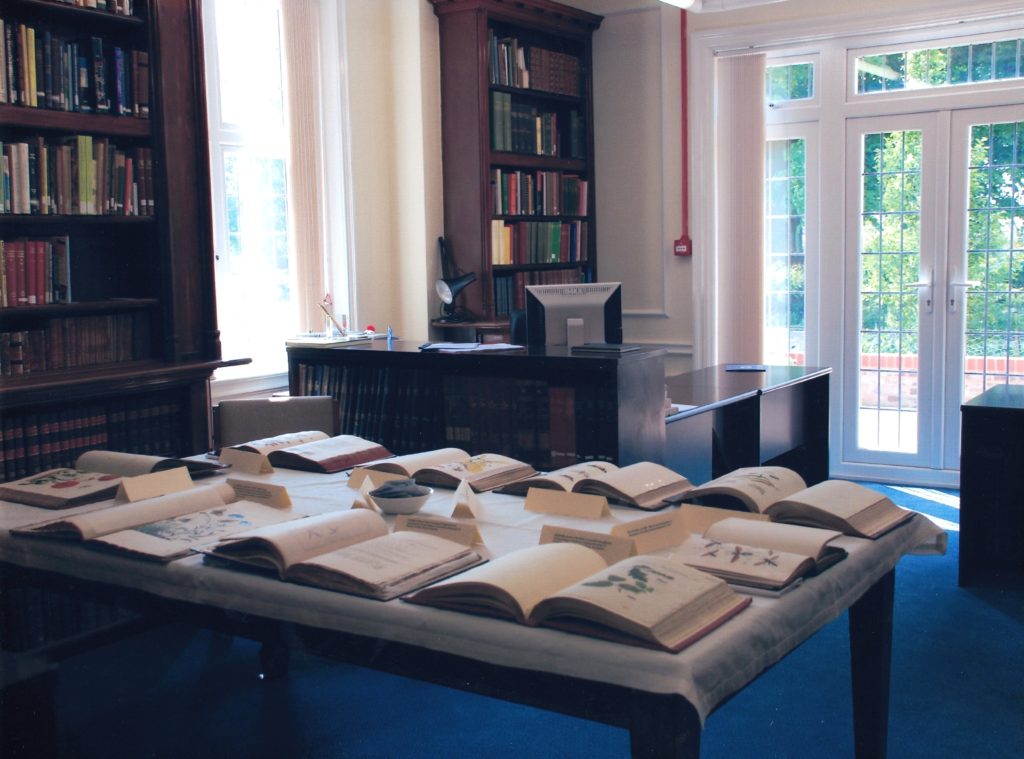 Rare Books on display at the opening of Mansion House in 2007
Rare Books on display at the opening of Mansion House in 2007
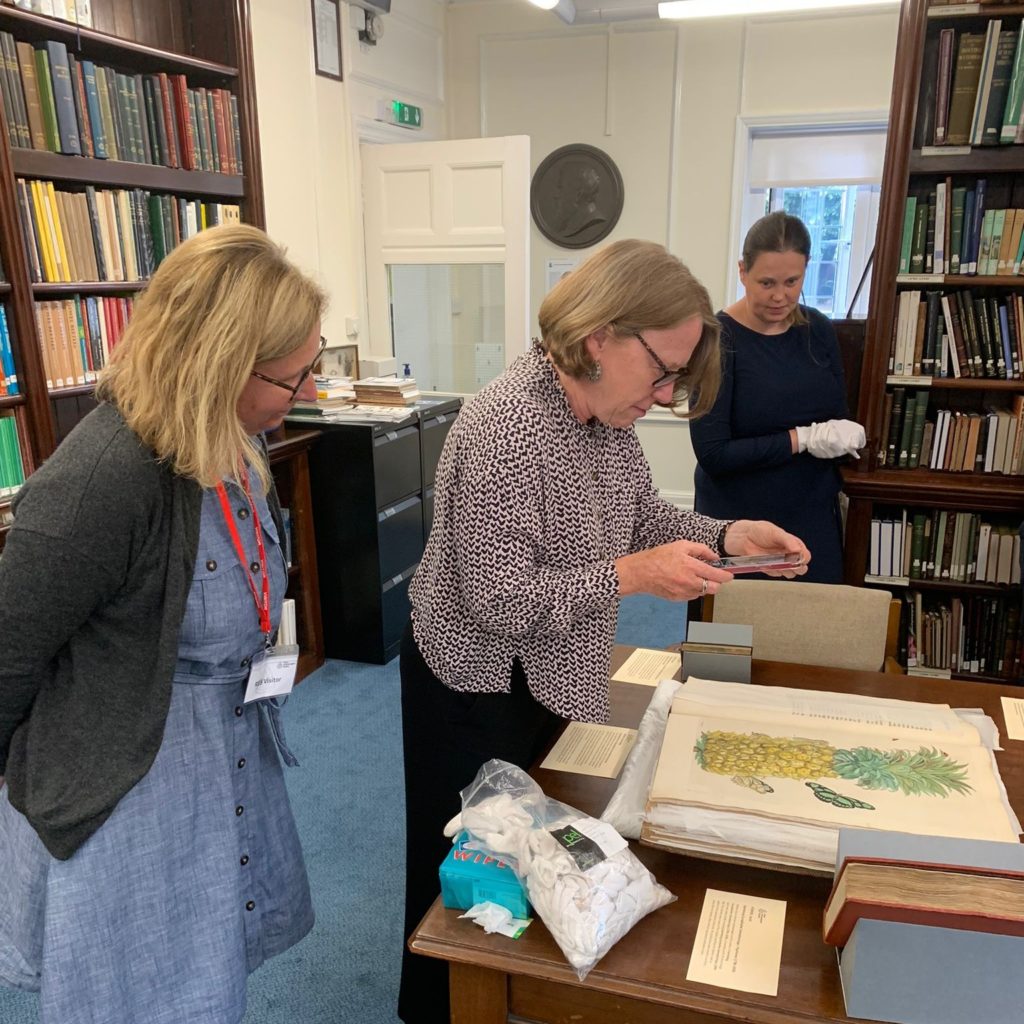 President Jane Hill and Past President Helen Roy viewing a work by Maria Sybilla Merian
President Jane Hill and Past President Helen Roy viewing a work by Maria Sybilla Merian
History of RES Archive
The archives date back to the Society’s founding in 1833. The Society collected letters, journals, and other papers of entomologists, as well as portraits and photographs of eminent entomologists, which now form the basis of the substantial Archive.
The Society acquired material from both donations and purchases. Papers and illustrations of Jacob Hübner, (1796–1838), a German Entomologist, who produced several important early illustrated works on butterflies and moths, were purchased in 1935. In 1994 the papers of George Charles Champion, an English specialist in beetles who was RES Librarian from 1891-1920, including journals from his travels in Central America, were donated by his descendant Rosemary Rowles.
The Society has collected portraits of entomologists since its’ founding, a number of which were hung on the walls in the meeting room. In 1981, a request was made to fellows to help fill gaps in the collection.
Eric Gowing Scopes, a Fellow, started organising the archives as a volunteer in in 1988, and the work was continued by Simon Fenwick, an archivist in 1997, with ‘A guide to the Archives of the Royal Entomological Society’ being published in 2002.
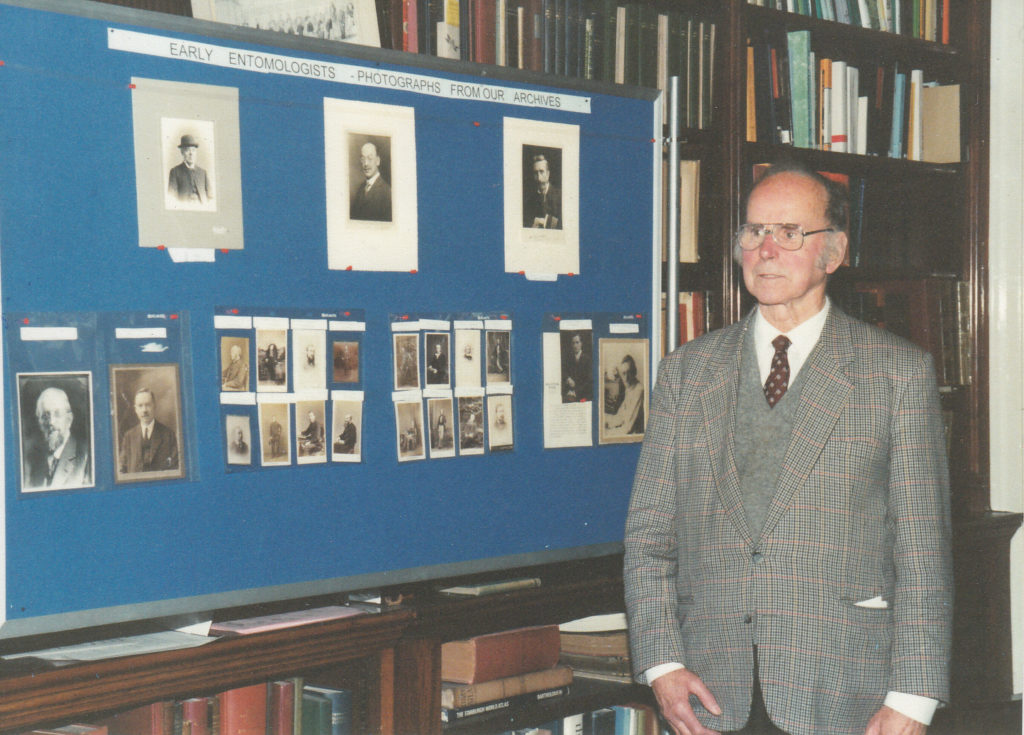 Eric Gowing Scopes displays portraits of early entomologists from our Archive in the RES Library
Eric Gowing Scopes displays portraits of early entomologists from our Archive in the RES Library
The archive collection, which is continually added to, currently stands at over 250 boxes, containing documents relating to the business of the Society since its’ founding. These include Minute Books of Royal Entomological Society meetings, financial records, office correspondence, member records, a photographic collection, entomological illustrations, and journals, notebooks and correspondence of eminent entomologists.